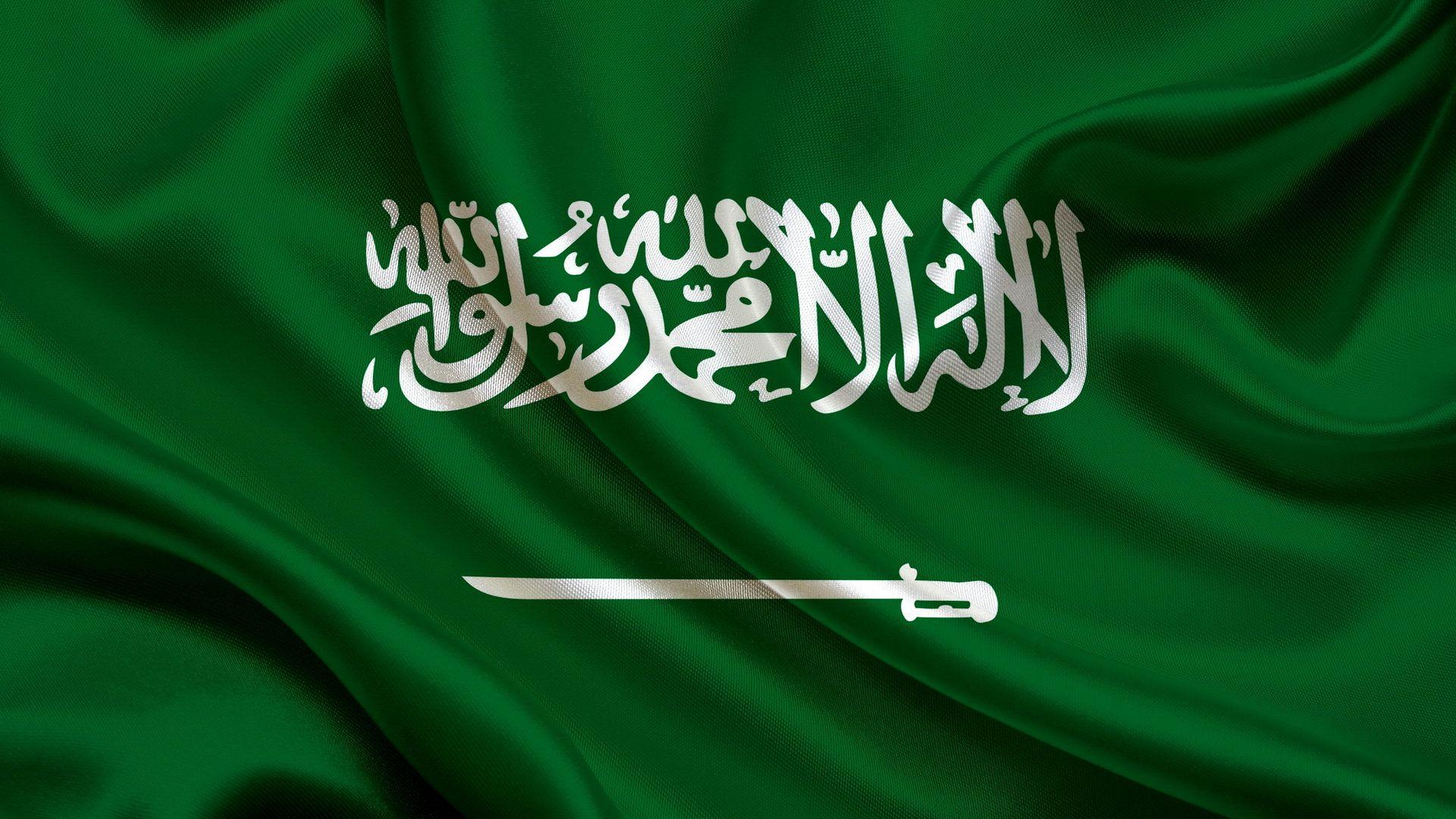Flag of KSA:
The Arabic engraving on the banner, written in the calligraphic Thuluth script, is the shahada or Islamic announcement of confidence:
لَا إِلٰهَ إِلَّا الله مُحَمَّدٌ رَسُولُ الله
lā ʾilāha ʾillā-llāh, muhammadun rasūlu-llāh
"There is no god except for God; Muhammad is the Messenger of God."
The green of the banner addresses Islam and the sword represents the severity in applying justice.The banner is produced with indistinguishable front and converse sides, to guarantee the shahada peruses accurately, from right to left, from one or the other side. The sword additionally focuses to one side on the two sides, toward the content. The banner is evil raised, implying that when seen from the front (front) side, it is lifted to one side of the flagpole.The standard shade of the banner's green was approximated by Album des pavillons as Pantone 330 C, while the variety utilized on banners at United Nations is around Pantone 349. At the 2012 London Olympics, Pantone 355 was used.
History:
The forerunner states to Saudi Arabia were Nejd and Hejaz. The state banner of Nejd followed the present Saudi banner example intently. The territory of Hejaz followed the examples found in nations like Palestine and Sudan. Caliphates, for example, the Rashiduns, the Umayyads and the Abbasids utilized different banners with only one tone. After the Sack of Baghdad in 1258 by the Mongols, the essential caliphate turned into the Mamluk Sultanate. In 1517, the Ottomans attacked Egypt and acquired Hejaz and governed it until the Great Arab Revolt of 1916. From 1902 until 1921 an alternate Arabic engraving was utilized. One of the essential rivals to the Saudis was the Emirate of Jabal Shammar of the Al Rashid family in the north of the landmass, until their loss in 1921.







4 Comments
Nice
ReplyDeleteNice
ReplyDeleteNice
ReplyDeleteMashallah
ReplyDelete